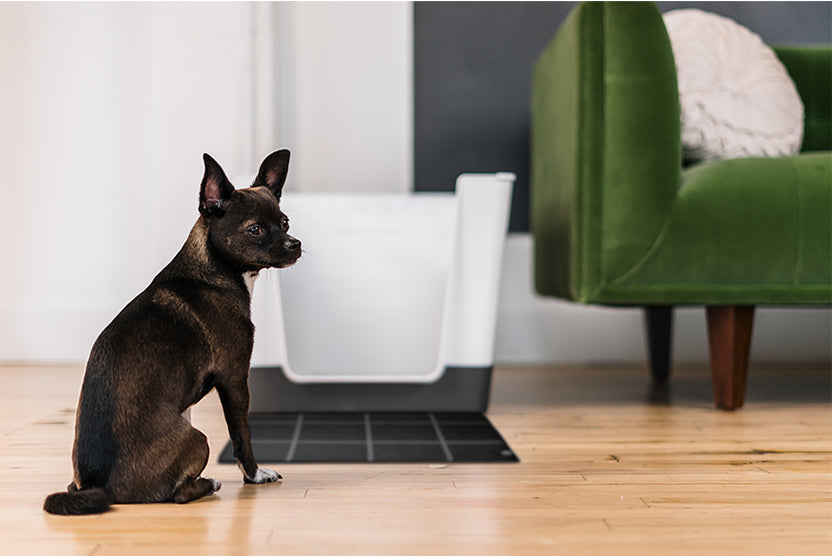Is Your Dog Scared to Walk Inside Their Doggy Bathroom?

What to Do If Your Dog Won’t Use the Doggy Bathroom
So you bought the Doggy Bathroom, but your dog won’t go near it. Don’t worry—this is more common than you might think, and with a bit of patience and the right approach, most dogs learn quickly. The key is to build familiarity and confidence, not force.
Let’s walk through some gentle, effective training techniques to help your dog embrace their new indoor potty.
Skip the Treat Trap—Use Positive Reinforcement Strategically
It might seem like a good idea to tempt your dog by placing treats inside the Doggy Bathroom, but resist the urge. Dogs need a clear distinction between their eating space and their potty area. Instead, wait until they enter or use the Doggy Bathroom, then reward them right away with praise and a treat. That timing reinforces the correct behaviour.
Use Their Own Scent to Encourage Exploration
Start by placing a used pee pad on top of a fresh one and lay it just outside the Doggy Bathroom. Over a few days, gradually move the pad closer, eventually placing it inside the unit. Most dogs are drawn to familiar scents—especially their own—and this method helps trigger their natural instincts.
- Begin with a lightly used pad
- If that doesn’t work, try a heavily soiled one
- Still no interest? (We know it sounds odd...) Ask a fellow dog owner for a used pad. Many dogs are more likely to mark over another dog’s scent.
For Dogs Who Squat: Start With Just the Tray
Some dogs may be hesitant about stepping into an enclosed space. If your pup tends to squat instead of lifting their leg, try removing the enclosure entirely. Start with just the Doggy Bathroom tray and follow the same scent-training method.
Once your dog becomes comfortable, you can slowly reintroduce the enclosure. This gradual approach removes visual and spatial barriers that might be causing anxiety.
Be Consistent—And Keep Encouraging
Every dog is different. Some adapt right away, while others may take a few days or more. The most important thing is to remain patient and consistently guide your dog to the right spot. Bring their attention to the pad regularly and always celebrate small successes.
When they finally get it, give lots of praise, cuddles, and a reward. That moment of positive reinforcement will go a long way in helping the behaviour stick.
Need More Help?
Explore more indoor potty training tips or browse our Doggy Bathroom accessories to make the process smoother. With the right tools and training, you and your dog will find your rhythm—no more accidents, no more stress.



